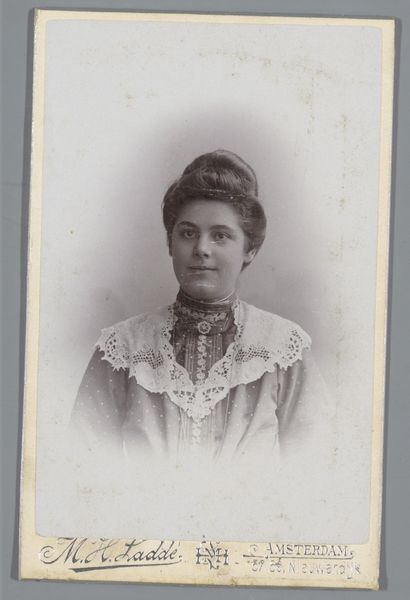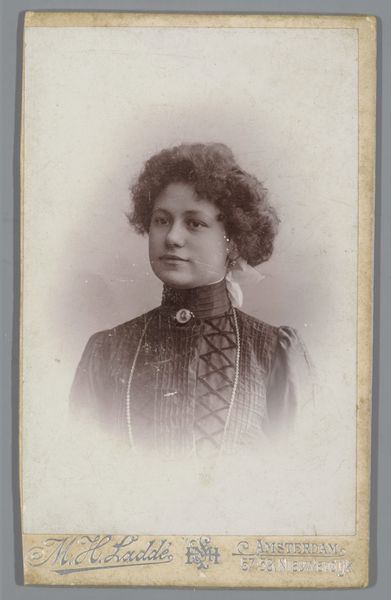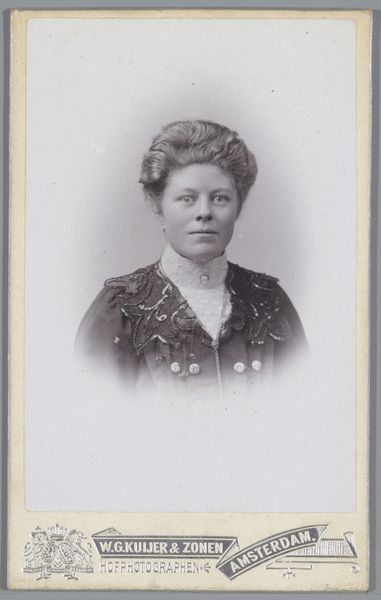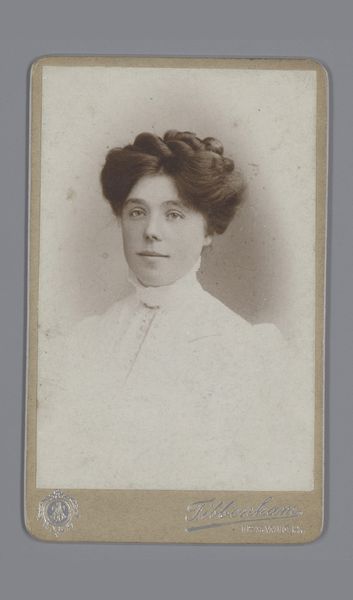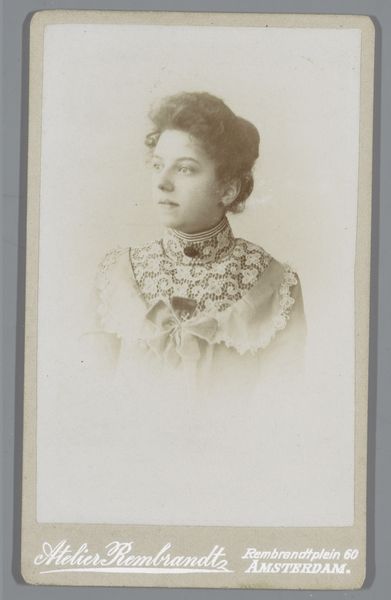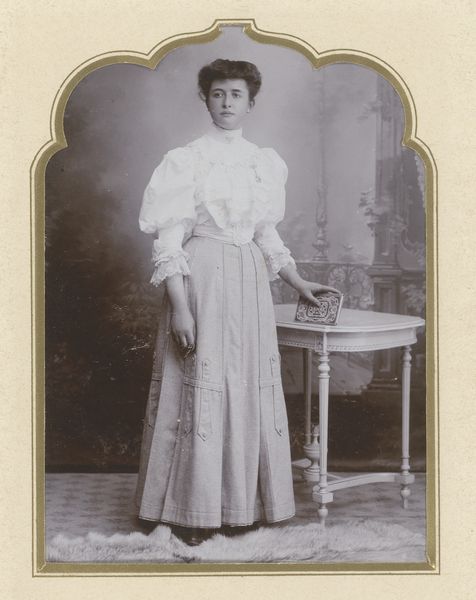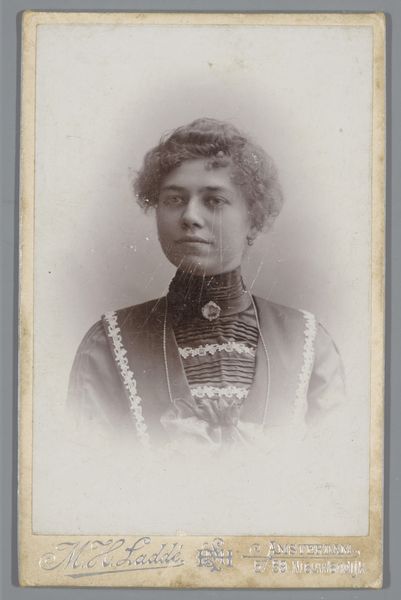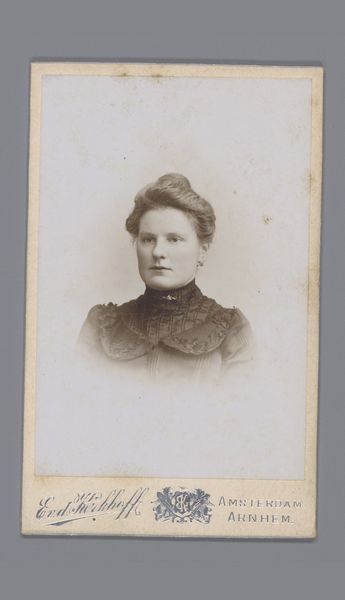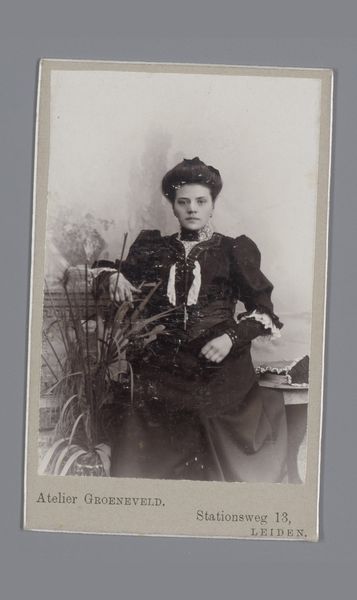
photography
#
photography
#
realism
Dimensions: height 105 mm, width 64 mm
Copyright: Rijks Museum: Open Domain
Curator: Here we have a photographic portrait dating from somewhere between 1903 and 1913, attributed to Antoine van Horenbeeck. The title simply describes it as 'Portrait of an Unknown Woman.' Editor: My immediate thought is a striking, almost stern image. The high collar, the dark dress with polka dots... It's like she's peering right through you, even across all these years. Curator: Right. It's interesting how these studio portraits, particularly the emphasis on realism achievable through the photographic medium, helped construct a very particular image of respectability in the Belgian bourgeoisie. We see it in the attire. Editor: Absolutely. The dots almost feel like a visual representation of social expectations. Yet there's a certain quiet resolve in her gaze too. Do you get that? The slight pursing of her lips suggests an inner strength, a personal narrative hidden beneath the conventions. And the soft floral details feel hopeful, contrasting her austere expression and dress. Curator: And isn't that contrast emblematic of the turn-of-the-century societal tension? Women increasingly occupying a space between inherited tradition and burgeoning independent lives. Note the high neck with the detailing against the polka dots which would've required significant material and cost to reproduce with a consistency such as this. What we call fast fashion was just on the horizon so each individual was very particular and had considerable work done in their choice of apparel. Editor: Yes. And the choice of having such realistic photography almost felt a sign that these families valued truth. It wasn't trying to glorify anything, merely portray reality, even in that short and constrained a shot. In that sense, there may be no pretense behind the image. The artist has simply aimed to reveal all of what she is. Curator: Perhaps one of the things I am left thinking about, looking at the details in her wardrobe is how our access and speed in contemporary consumption creates a very disposable culture for clothing now that almost fully strips each piece of any identity or meaning. Editor: Yes, indeed! The material holds within it not just beauty and care, but the hope that there is a sense of enduring beauty in one's persona too. The portrait holds, maybe, more than the artist at first understood, something about dignity surviving changing social tides.
Comments
No comments
Be the first to comment and join the conversation on the ultimate creative platform.
